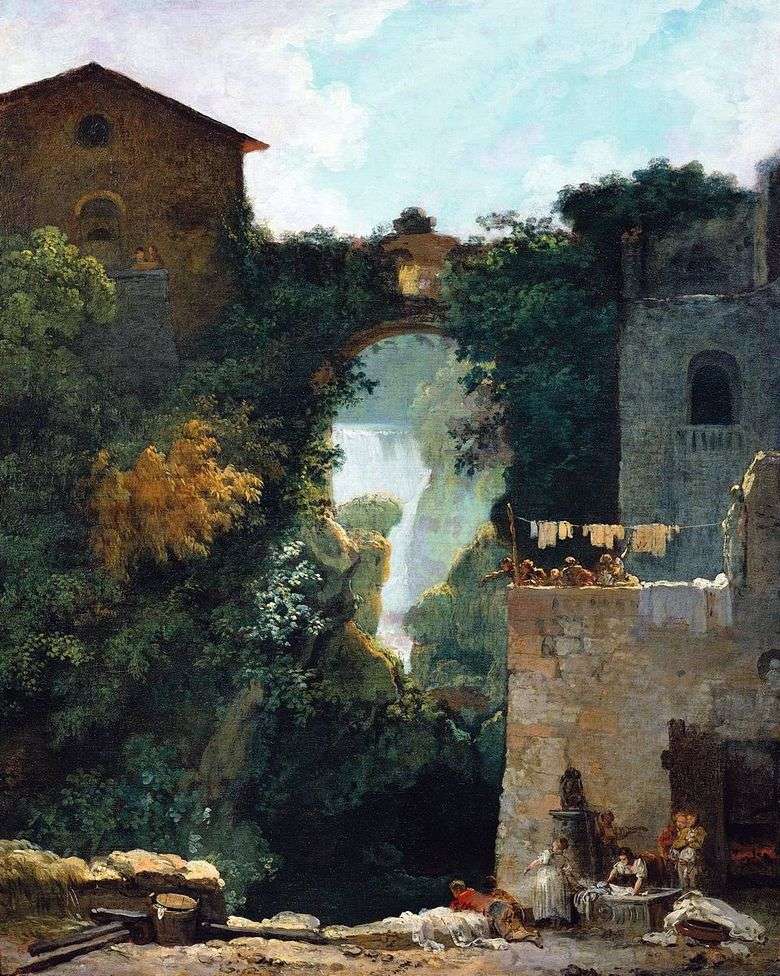
The time of the creation of Jean-Honore Fragonard fell on the second half of the 18th century, later called the Ancienn regime, the period of the Great French Revolution. In 1752, he was awarded a grand prize in the competition for the Grand Prix at the Royal Academy of Painting and Sculpture. This gave him the right to become a pensioner of the French Academy in Rome, and in 1756 Fragonard went to Italy to improve his skills.
It is known that the director of the French Academy in Rome, Charles Joseph Natuar, valued the talent of Fragonard and asked him to extend his stay in Italy. “Our young artist does very good sketches, which bring him honor,” he wrote in a letter to the director of the royal buildings, the Duke de Marigny. One of the most beloved places in Fragonard’s work was a beautiful corner in the vicinity of Rome – Tivoli, famous for architectural monuments: the Vesta temple, Villa Maecenata, Villa d’Este, famous for its gardens and cascading fountains.
Here there is a series of inspired, festive, vivid drawings of Fragonard, in which, as if the joy of the artist, directly communicating with reality, regardless of someone else’s creative perception, sounds. The painting “The Great Cascade in Tivoli” was written according to a drawing executed on the nature. From the slopes of the Central Apennines, from a height of 160 meters, forming travertine terraces, the cascade of the Tivoli waterfalls falls on the Anien river. Fragonard in place created a red chalk sketch, which served as the basis for the picture. In the middle, behind the arch, a rift with the silver jets of the waterfall is written in the color of the jasper. All as if in air green, the hill on the left gradually falls. Like the fusion of heaven and earth, the light descends into the dusk of the abyss, illuminating a group of people and hanging clothes on the upper terrace. A young woman with her head held up,
 Grande Cascade à Tivoli – Jean Honoré Fragonard
Grande Cascade à Tivoli – Jean Honoré Fragonard Grand Cascade en Tivoli – Jean-Honore Fragonard
Grand Cascade en Tivoli – Jean-Honore Fragonard Island of Love by Jean Honore Fragonard
Island of Love by Jean Honore Fragonard Baby swings by Jean Honore Fragonard
Baby swings by Jean Honore Fragonard A small park by Jean Honore Fragonard
A small park by Jean Honore Fragonard Jean-Claude Richard, abbe Saint-Non by Jean Honoré Fragonard
Jean-Claude Richard, abbe Saint-Non by Jean Honoré Fragonard Île d’Amour – Jean Honoré Fragonard
Île d’Amour – Jean Honoré Fragonard Date by Jean Honore Fragonard
Date by Jean Honore Fragonard